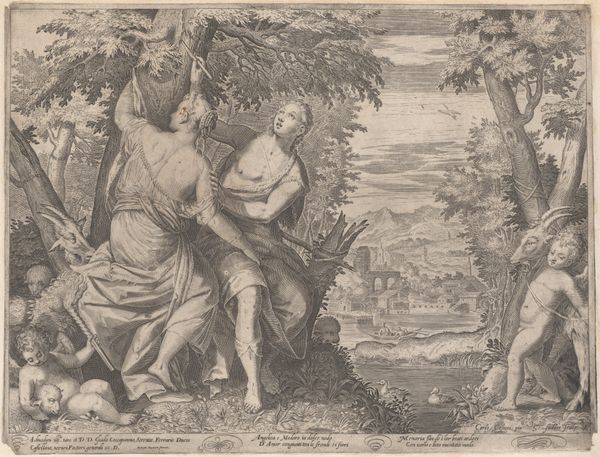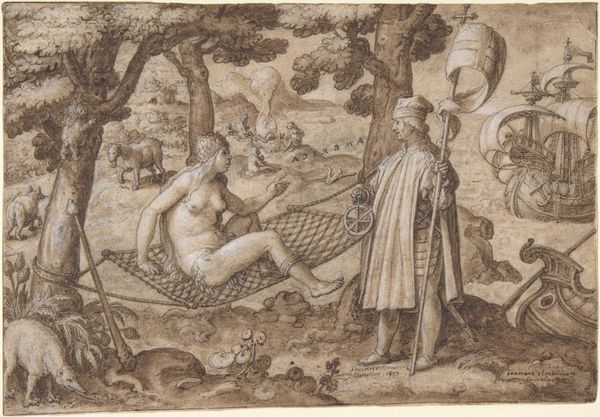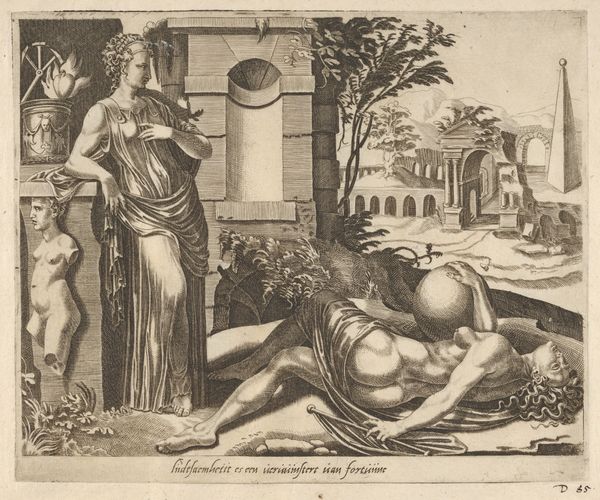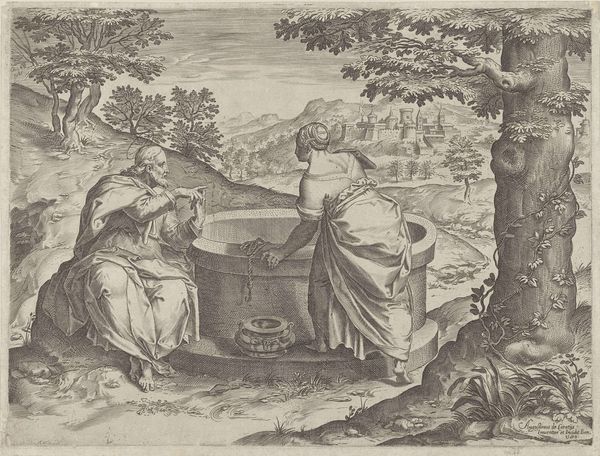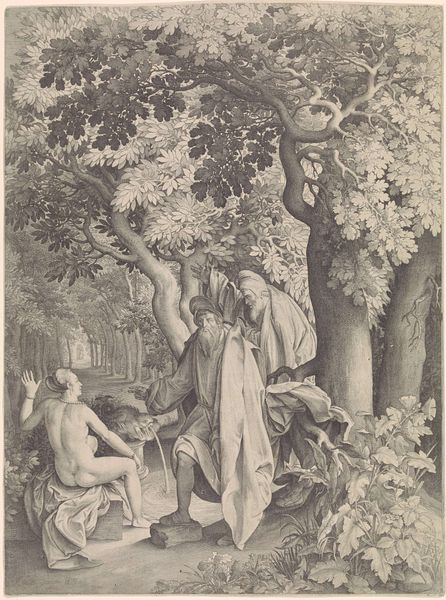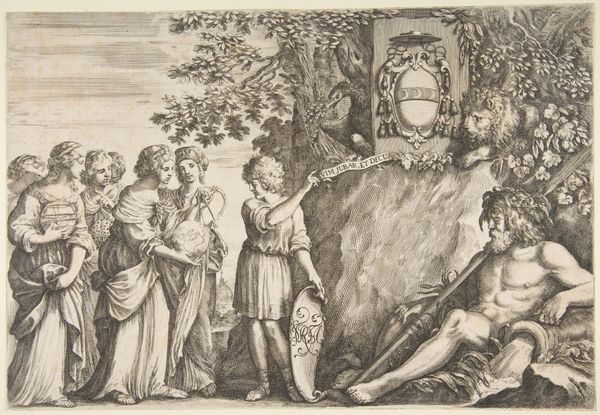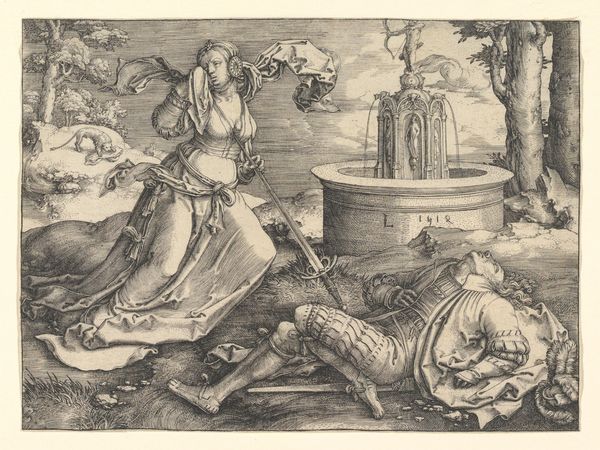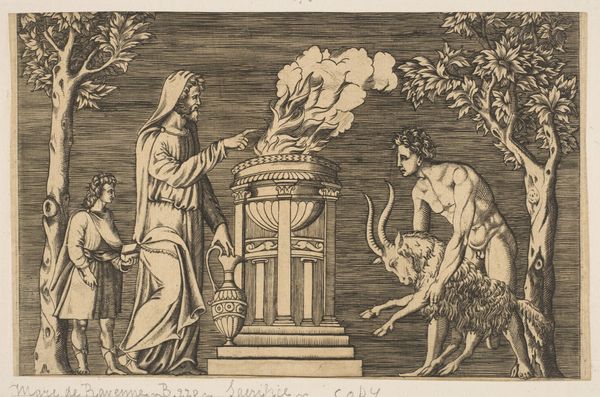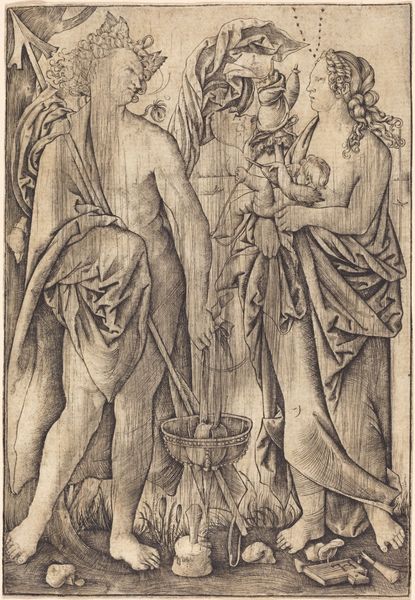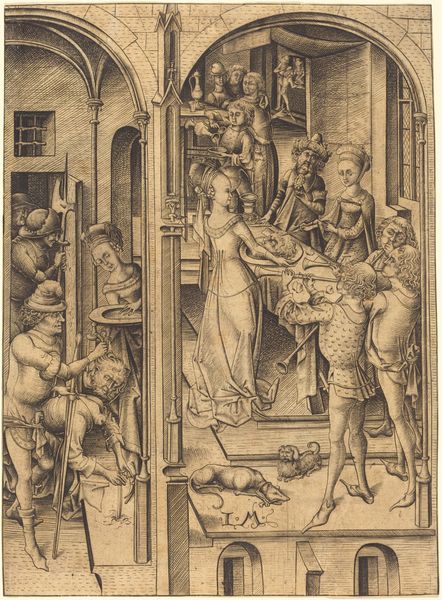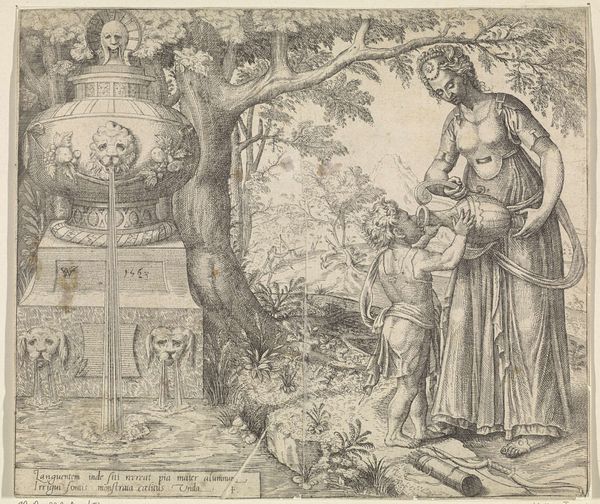
oil-paint
#
oil-paint
#
landscape
#
figuration
#
oil painting
#
christianity
#
mythology
#
painting painterly
#
genre-painting
#
history-painting
#
northern-renaissance
#
realism
Dimensions: 36.9 x 49.5 cm
Copyright: Public domain
Editor: We're looking at "Landscape With The Penitent Saint Jerome," an oil painting by Joachim Patinir. There's an incredible sense of depth and distance within this landscape, creating a serene but slightly melancholic feeling. How do you interpret the formal elements? Curator: Formally, one observes an intricate rendering of light and color. Notice how Patinir employs aerial perspective to structure space; the gradation of blues in the distance recedes, thereby creating a deep recession from foreground to background. The composition is bisected into planes through the juxtaposition of warm, earthly browns with cooler, ethereal blues and greens. How does this division influence your perception? Editor: I see what you mean. The warm foreground definitely contrasts with the cool distance, almost like two separate realities blending together. It's also interesting that the figure of Saint Jerome seems almost secondary to the landscape. Curator: Indeed. This emphasis diverges from earlier figural compositions and foregrounds the dominance of landscape as an autonomous pictorial space. The rocky outcrop, painted with precision, punctuates the vista, and a balance between its verticality and the flatness of the horizon exists. Are we perceiving an equal appreciation of landscape and figure, or does the artist attempt a dominance of one over the other through these compositional strategies? Editor: That is definitely a fascinating way of looking at it. I initially saw a narrative about Saint Jerome in his landscape. Now I appreciate how Patinir balances—or unbalances—the relationship of figure to setting by experimenting with pictorial strategies. Curator: Precisely, considering only the inherent visual relationships in Patinir’s design illuminates his pioneering construction of the landscape genre. We began with form and landed upon the function that the form provides the piece, completing a reading of the artwork.
Comments
No comments
Be the first to comment and join the conversation on the ultimate creative platform.
